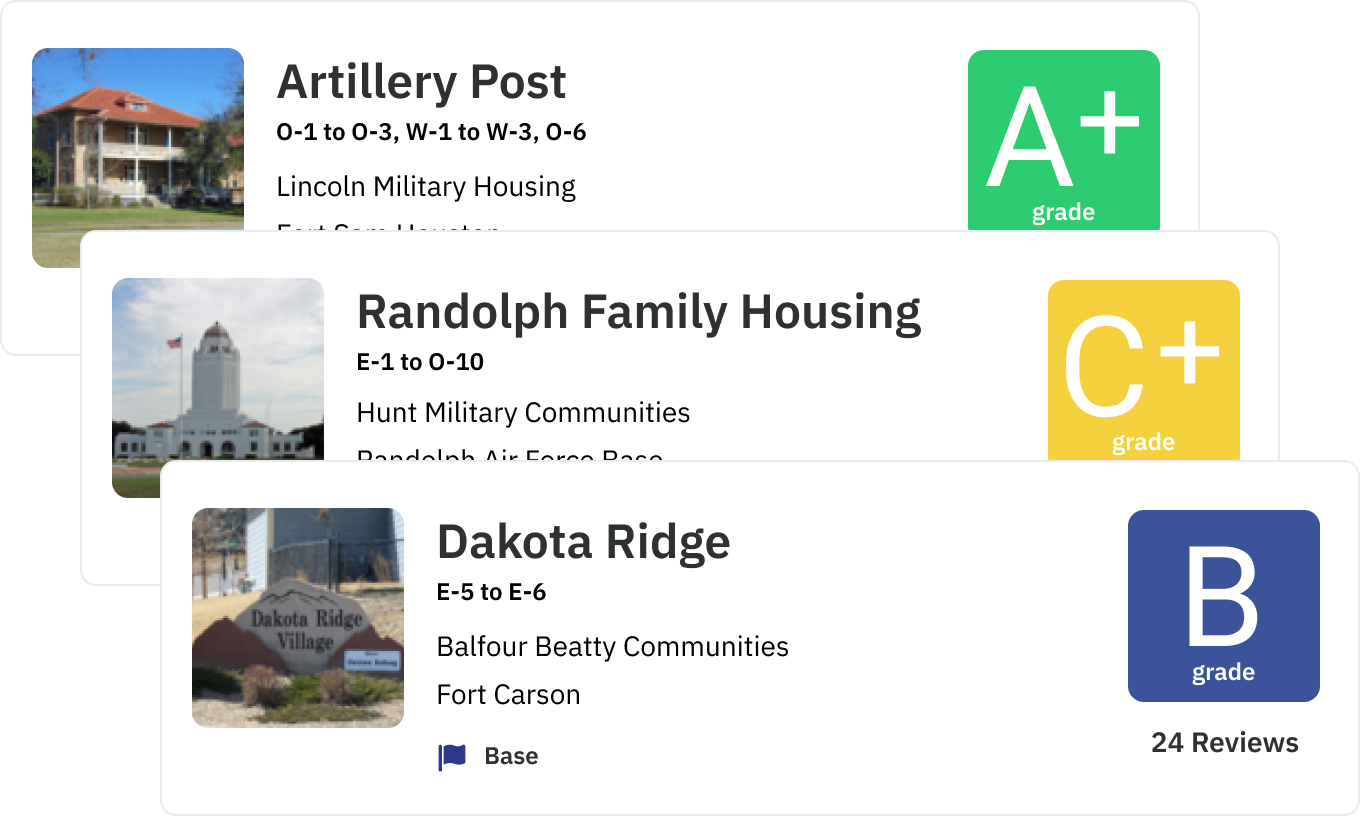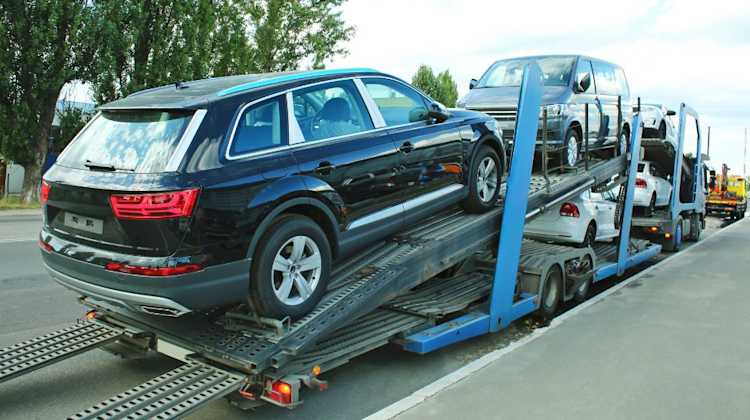PCS Q&A: Setting Expectations for Pack and Load Day
by PCSgrades Staff - June 24th, 2021

DoD Updates: The timeline we are seeing for PCS moves means that depending on your location, there are many places already booked until mid-July. Some locations may struggle to get shipments booked and assigned. Go online and book your dates as soon as you get orders. Try to be flexible with dates and don’t lock yourself into a move date with your landlord until you have moving dates. Remember you can always do a PPM. We are seeing some places struggling with capacity, so try to be flexible and have multiple plans for your move.
When the movers and packers arrive on the 1st packing day, what happens?
If you are doing a PPM (Personally Procured Move), your packing days will look very different because you are packing yourself. Some people have a long lead time and do a little at a time. Pack the most valuable things first when you have the most time and energy.
If you are doing a military move, Day 1 is when the crew shows up and does introductions. They should have a COVID form to show that no one has symptoms. Then you give them a tour of your home to evaluate whether they need a larger crew or extra packing materials. If you have special requests, this is the time to share them. I always ask them to start with the kids’ rooms and do the kitchen last. That’s what happens at the very beginning. They may begin stacking piles of boxes throughout the house. Communicate with the crew that is there throughout Day 1.
What are you supposed to do while the crews are packing?
The big thing is for you to be involved in the process. You need to be involved either by going in and checking on the process or checking spelling and labels on the boxes. We had a move where our last name was spelled three different ways on boxes! Check the descriptions on boxes because those are the descriptions used on the overall inventory. If a box says “shoes” but it actually contains shoes, books, and board games, then make sure all those descriptions are included. “Kitchenware” is not descriptive enough, so add details to those types of labels. Items like Pampered Chef can be costly and difficult to replace, so it is okay to request those items to be labeled as Pampered Chef. This is why it’s useful to have your own home inventory, so everything is listed in detail with their size and brand and photos so you can tell if anything goes missing.
Electronics should be listed on the inventory by specific device with a serial number. But the cardboard box can say “electronics” as long as the specific details are listed on the inventory. These should also be listed as high-value items with a seal. Sometimes the generic label on electronic boxes are meant to deter theft, but a high-value seal will also help prevent that. The important thing is to have the details on the inventory sheet.
You have to be comfortable with awkwardness. Of course it is awkward to sit there in the room while they pack around you. You need to be available to answer questions if they find something that is broken, seems fragile, should be packed in a particular way, etc. Make some small talk if that helps break the ice. Everyone wants to talk about favorite and least favorite sports teams! Let them know that you are involved and that you care.
If you are by yourself on packing day, have a game plan of how and when things can be packed so you can bounce between a few rooms at a time or stand in the hallway between two rooms. You can’t slow down the movers by limiting them to one room at a time, so plan a way that you can observe two areas at once.
Can you pre-wrap anything in advance?
It will depend on the moving company. They are responsible for anything they take into their custody, so some companies have a policy to re-wrap anything they are liable for. You should have this conversation with your company before packing day. Some companies, if it is packed well, they will accept it in that condition and just put it into boxes themselves. But they need to be able to see and identify the objects and see their condition.
What should we do with pets on packing and move days?
It’s important to secure our pets on those days. If you have a fenced-in yard, consider putting the dogs out there with water. Or, put them in a small room that isn’t getting packed to keep them out of the way. It’s always best to board them so you don’t have to worry about them getting in the way. Cats are difficult because you want to make sure they don’t jump into a box or accidentally get packed. So be sure to keep them crated or boarded and secured somewhere safe.
What's something you do between packing and loading to make things easier?
There are room labels you can get that are different colors. While they are packing, I will put these color-coded labels on the boxes from each room. Then on move-in day, I tape a paper on each room door with the colored label, the name of the room, and a list of the major furniture in each room. This makes it so much easier for me to direct traffic, because they can easily tell where things go.
I also use a stamp on each box with our name, phone number, and email address. I put it on every single box, in case a box gets shuffled into another shipment or ends up in storage. That makes it so much more likely that someone will call us if one of our boxes ends up in their shipment. Then they can ship it to my new address and I can just Venmo them the money. This is an easy job to teach older kids too.
There are more tips like this on our Facebook group, Lost During My PCS. You can put requests for missing boxes there, or post a photo of items that showed up at your house by mistake, and it is great to help reunite people with their stuff!
What do you do when the crew says they are done packing?
Go around and double check! Maybe there is still something inside closets, hidden behind a door, leaning against the wall, etc. Open all the cabinets and drawers, and check under furniture–especially in kids’ rooms–to make sure everything is packed. Check that drawer underneath the stove, because you probably have cooking supplies stored there. If you leave something behind, you may not be able to get it back. As they say they are done with a room, check each one. Pull down attic stairs and check inside every available space!
What do we need to know about inventory lists?
After packing days, there will be two separate inventories. The first will be only for boxed items–things that fit inside a box. It won’t include furniture or larger bulky items. Those items will be inventoried later, on load day. The description of each box will be pulled from what is written on the box.
The second inventory is the high-value inventory. This can be for antiques, collectables, signed memorabilia, etc. It is generally anything worth more than $100 per pound. It should be marked with a high-value item seal to prevent tampering. The high-value inventory should list each item by brand name, serial number, and other details. Some companies are filling it out for you or claiming that it is only for individual items worth more than thousands of dollars. The regulations say $100 per pound, and can include items like electronics, antiques, china, crystal, etc. If your things fit the description in the regulations, pull those up and show it to the company. You can always contact your Move Coordinator with any concerns or ask for a Quality Assurance Inspector to come out and supervise.
Next comes load day. How does that day begin?
It will begin in a similar way to packing day, with the crew arriving and bringing the truck. They will need a tour of the home to decide what packing materials they need, how big each bed and mattress is, etc.
After that, they begin pulling things out of the home and staging it in the garage or driveway, while another person pulls from that pile to load the truck. If you will truck-share with someone else, they will load the mattresses last, to create a type of wall between the two shipments.
The driver will be walking around making a list of furniture pieces or loose-packed pieces like bikes or outdoor equipment that doesn’t fit inside a box. This will make a separate inventory of furniture and loose-packed items.
Movers typically work up to 5 PM. If they cannot finish by 9 PM, you are allowed to ask them to stop and return the next day. They are not supposed to start a job they cannot finish. Find the crew leader on your property and discuss the timeline with them. If there are issues during packing day, call the Move Coordinator or the Quality Assurance supervisor. They can be the “bad guys” to contact the local company and either send extra personnel, or extend it to the next day. The regulation requires them to come back the very next day in the morning so that the pick-up will hopefully remain on schedule.
What is our role during load day?
This is another day of walking around and being involved. Keep track of what is going on and whether it seems like they will be completed on time. As soon as you have a feeling that things aren’t on schedule, call your Move Coordinator. The more advance notice they have, the more options they have to respond. On packing days, watch how things are being wrapped and treated. Walk around with the person doing the furniture inventory, because they are making note of all the codes for scratches, dents, damage, etc.
This is another good time to check things and open up all the closets, open and close all doors to see if anything was behind them. The packers may have left completed boxes inside some of the closets or un-noticed in a corner. Good preparation and setting your expectations will help things go smoothly.
What should you do with young kids on load day?
For older kids, electronics can entertain them well for most of the day, until the couch and TV are packed up. Or borrow a large box from the moving company, give them washable markers, and let them draw or color as long as they want. Or put bubble wrap inside a box and let them play in that box and pop it all. Kids like to be involved and help. Some furniture movers are really good with kids. Let kids hand them moving blankets or other supplies as requested. But if possible, it’s always helpful to send them to a friend’s house or to arrange childcare for the day to keep them out of the way.
What is the inventory called after loading day?
This is the inventory for furniture and loose-packed items. This is the list that the driver puts together. There are a lot of codes and letters or numbers next to each item. These designate damage and specific locations on the items. It could say soiled, scratched, worn, etc. They are listed in a key on the paperwork so you don’t have to memorize it. It is supposed to indicate the current damage on your furniture as it is on Load Day. It’s normal to get more scratches during moves. But they should not be labeling everything automatically as scratched or gouged if it isn’t damaged. Some people take pictures of the current damaged conditions to show how it appeared on Load Day. If you don’t agree with certain codes, you are absolutely allowed to circle those codes, put an asterisk, and write that you disagree with the assessment. Do this before you sign the form, because once you sign it you aren’t allowed to make any changes. If you think they are doing this obsessively with all items, just write that you don’t agree, then initial your comment and sign the form.
What is a mover's notice?
It’s a form you can download from PCSgrades that helps put your movers on notice before the packing and load days. It tells them you are looking forward to giving them a positive review, and highlights areas that you will be paying attention to with that review. Hopefully, this helps motivate them to do their best professionally! Then after your move, be sure to go to PCSgrades and leave a review of your moving company, detailing how they did, good or bad. Other military families will read your reviews before planning their move! All our reviews are written by and for military families.







